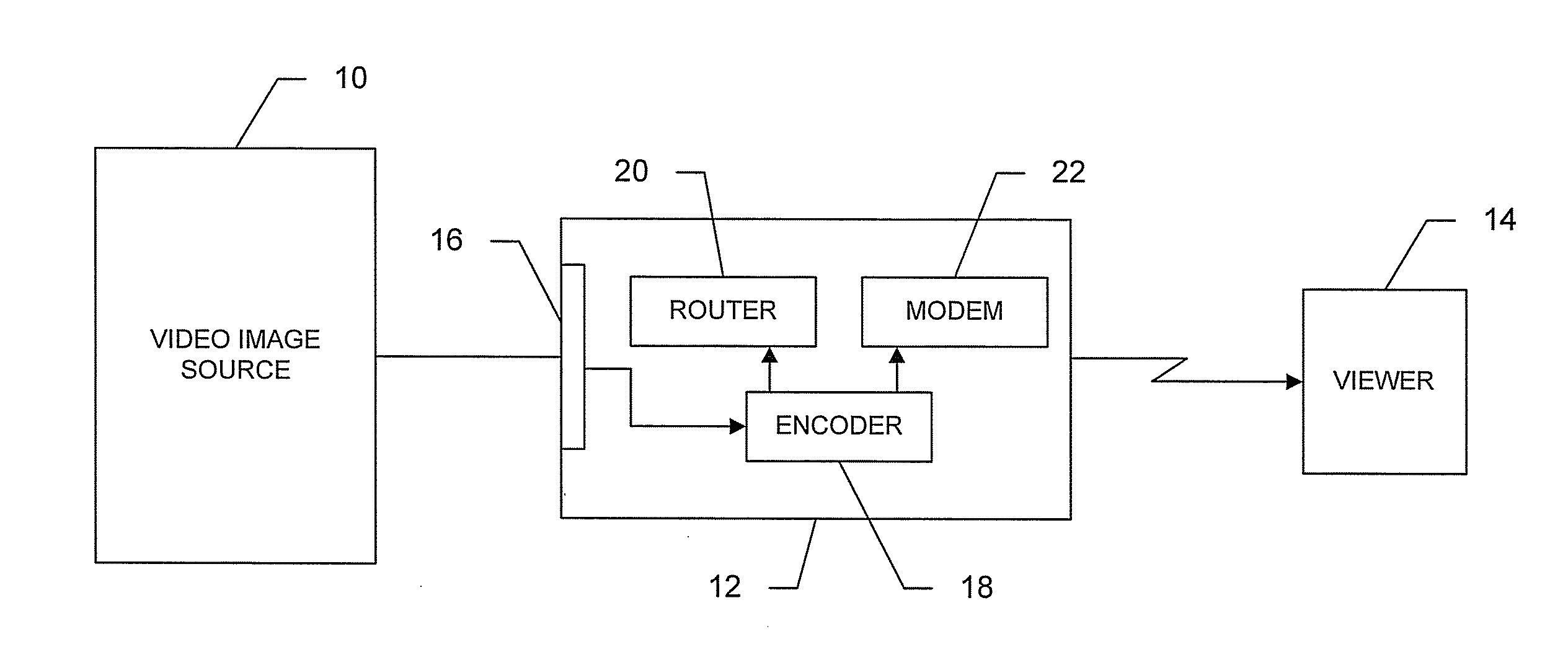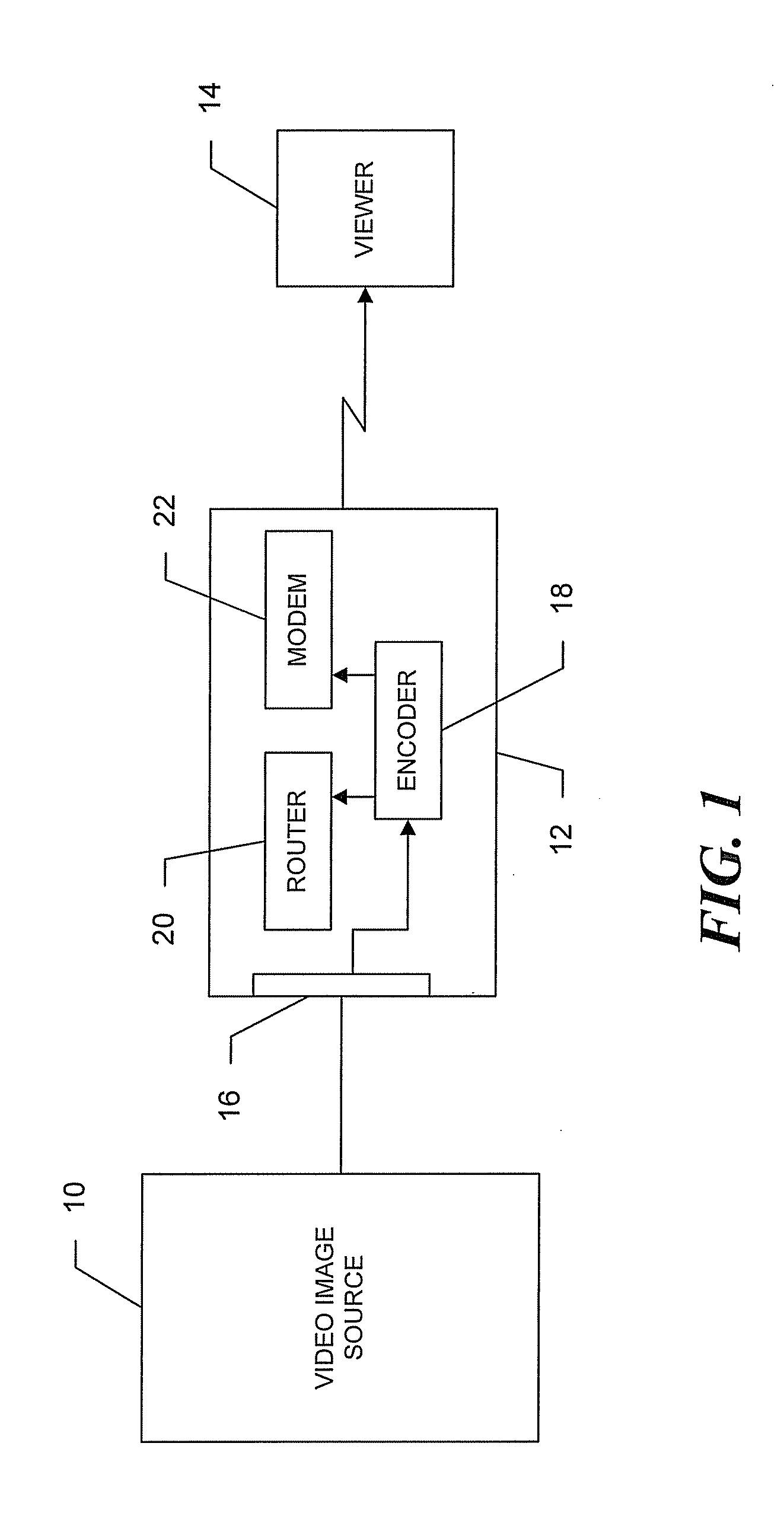Compact real-time video transmission module
- Summary
- Abstract
- Description
- Claims
- Application Information
AI Technical Summary
Benefits of technology
Problems solved by technology
Method used
Image
Examples
Embodiment Construction
[0017]In FIG. 1, a source of video signals 10 supplies these signals to a compact transmission module 12 which transmits these signals over a network using an internet protocol e.g., the Internet Protocol) such as a wired or wireless private network or the internet to a remote viewing station 14. The video signals may comprise any of the common video signals such as composite video, S-video, HDMI, DVI, or VGA, etc. As new types of video signals become available, these can also be provided for.
[0018]The video signals are supplied to the transmission module 12 through a connecter 16 which has a connector strip that provides an input connector to match the output connector of the particular video source 10. The output of the connector strip is applied to an encoder 18 which encodes the video for transmission in substantially real time over the network. By “substantially real time”, I mean with time lags typically not larger than minutes and most commonly of the order of seconds. The sp...
PUM
 Login to View More
Login to View More Abstract
Description
Claims
Application Information
 Login to View More
Login to View More - R&D
- Intellectual Property
- Life Sciences
- Materials
- Tech Scout
- Unparalleled Data Quality
- Higher Quality Content
- 60% Fewer Hallucinations
Browse by: Latest US Patents, China's latest patents, Technical Efficacy Thesaurus, Application Domain, Technology Topic, Popular Technical Reports.
© 2025 PatSnap. All rights reserved.Legal|Privacy policy|Modern Slavery Act Transparency Statement|Sitemap|About US| Contact US: help@patsnap.com


